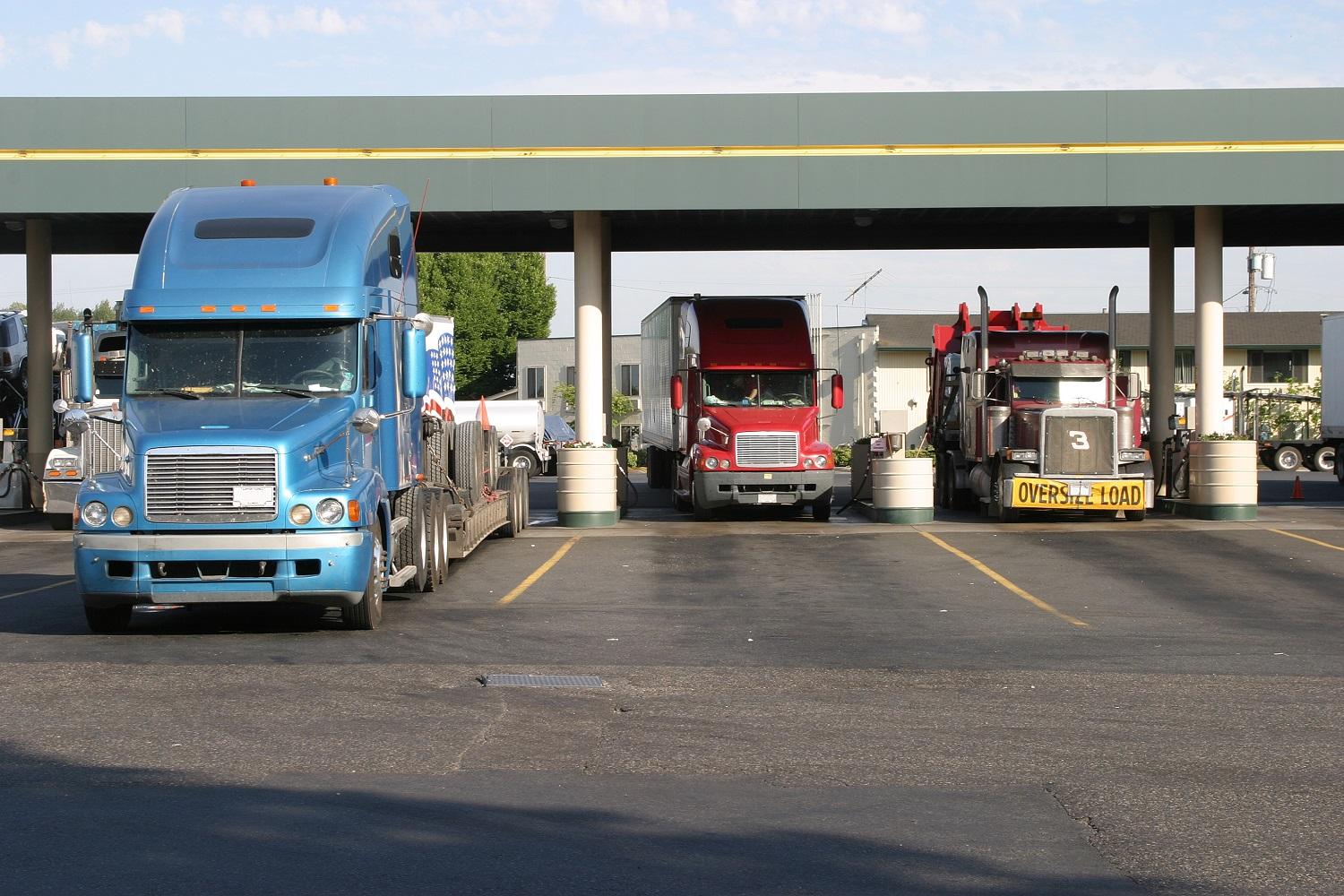Business News Daily provides resources, advice and product reviews to drive business growth. Our mission is to equip business owners with the knowledge and confidence to make informed decisions. As part of that, we recommend products and services for their success.
We collaborate with business-to-business vendors, connecting them with potential buyers. In some cases, we earn commissions when sales are made through our referrals. These financial relationships support our content but do not dictate our recommendations. Our editorial team independently evaluates products based on thousands of hours of research. We are committed to providing trustworthy advice for businesses. Learn more about our full process and see who our partners are here.
Tips to Reduce Your Fleet’s Idle Time
GPS fleet management software can cut down on your fleet's idling time, saving you money and positively impacting the environment.

Table of Contents
Idling commercial vehicles can significantly drain a company’s financial resources. Fuel comprises the largest operating expense for fleets, with estimates ranging from 40 to 60 percent of most fleet budgets. As fuel costs rise and environmental concerns about air pollution and global warming become more prevalent, this situation will only worsen.
To address these issues, fleet managers must find ways to reduce their vehicles’ idle time, including using telematics solutions and fleet management software. However, before you can determine how to cut down on idling, it’s crucial to understand idle time and its downsides.
Editor’s note: Looking for the right GPS fleet management software for your business? Fill out the below questionnaire to have our vendor partners contact you about your needs.
What is idle time?
Idle time is the time that elapses when a vehicle is on but not moving. All drivers have some idle time, such as when they reach stop signs or stoplights. However, different types of fleets face many other instances of idling. For example, long-haul fleet drivers will have higher idle times than truck and delivery drivers who work local routes.
Idling can occur when drivers are:
- At toll booths
- Stuck in traffic
- Loading and unloading the truck
- Preparing and processing documents
- Warming up the engine and cab before departure
- Stopping the truck to use the phone
- At a rest stop
Business owners and fleet managers must prioritize the fleet’s health and safety, so some idling is hard to avoid:
- Drivers must make rest stops along the way to support their comfort and meet hours of service regulations.
- Some drivers spend nights in their vehicles on long-haul deliveries and must keep their trucks running to stay warm.
- During their downtime, drivers may go online, watch TV, listen to the radio and call their families.
These aspects of downtime are essential for long-haul drivers’ physical, mental and emotional health.
How GPS fleet management can help reduce idle time
GPS fleet management software and systems can help fleet managers monitor and manage their vehicles’ idle time with the following functions:
Driver behavior reports
Telematics software records significant data about fleet trucks and driving behavior, including idling, aggressive driving, speeding, braking and cornering. These behaviors affect the vehicles’ performance, fuel consumption and durability, potentially increasing operational and maintenance costs.
For example, speeding and hostile driving, like hard braking, can cause additional wear and tear on vehicle components, reduce fuel efficiency, increase the likelihood of accidents, and more.
Telematics software information can help you keep a driver scorecard to identify your “problem” drivers. Armed with this information, you could create training programs to address specific behaviors and customize driver training. The software’s reports can also show you which drivers idle longer than others, so you can notify these drivers or implement an “idle shutdown” program.
Idle time tracking
Telematics software monitors engine diagnostics and tracks idling simultaneously. It can alert you and the driver when a vehicle idles beyond a set time, spurring the driver to stop the engine. The alerts also provide insight to fleet managers on which drivers idle for above-average times. Ultimately, this feedback can reduce your fleet’s overall idle time and fuel waste.
GPS idle time reports
Electronic logging devices can track how long — and where — a truck idles. They can produce reports to help you determine the idling causes and what you or the driver can do to reduce idle time. For example, you might install an auxiliary unit in company vehicles or implement new idling rules (e.g., drivers must turn off the engine after a specific amount of idling time). You can continue monitoring driver behavior with the telematics software to ensure drivers follow the new rules.
Optimized delivery routes
Traffic congestion is another significant cause of idle time. You can use telematics software to optimize your drivers’ travel routes to avoid heavy traffic where possible. GPS systems use algorithms to evaluate all possible routes between two points. The telematics software assesses multiple variables when determining the best routes, including current traffic, accidents and ongoing and pending construction. Drivers can adjust their routes in progress or before they start their trip based on the telematics analysis. Reducing drivers’ time in traffic and optimizing their routes will reduce their idle time.
Geofencing
Geofencing involves setting a virtual perimeter around a geographic area in the real world. The technology has numerous applications in many different industries. For example, the city of Fort Lauderdale, Florida, used geofencing to reduce the maintenance of a local bridge. Overweight trucks were constantly crossing this bridge, resulting in the need for ongoing maintenance. City fleet managers used geofencing to tag all overweight vehicles so they would receive alerts when those vehicles crossed the bridge. As a result, the number of overweight vehicles using the bridge decreased by 90 percent.
You can use geofencing to reduce your trucks’ idle time by putting a geofence around common idling areas. When one of your vehicles enters the geofenced area, the telematics software will send you an alert to show how long the vehicle remains in the area.
What is the impact of excessive idle time?
Excessive idle time has serious repercussions in regards to public health, the environment, and profitability, including the following:
- Excessive fleet idle time wastes fuel. Excessive idling can cost approximately $12,000 per fleet truck per year, and every 10 percent of idle time can result in a 1 percent decline in the truck’s fuel economy. Commercial trucks cost about $70,000 in annual fleet fuel costs, possibly more. Idling the truck for 10 seconds uses more fuel than restarting the engine. In fact, idling uses about one gallon of the truck’s fuel for every hour it idles. Across an entire fleet, fuel costs related to idling add up to a significant expense for a business.
- Excessive fleet idle time incurs maintenance costs. Excessive idling can increase a company’s annual maintenance costs by approximately $2,000 per truck. With more frequent maintenance, trucks are out of service more often and for longer periods. Idling is twice as damaging to the truck’s internal components as turning the engine on and off. Idling also decreases the time required between oil changes.
- Excessive fleet idle time hurts the environment. Idling trucks are a source of carbon dioxide (CO2) emissions, which hurts the environment, going against the principles of corporate social responsibility. According to the EPA, carbon pollution from transportation makes up 28 percent of all greenhouse gas emissions (including CO2) in the U.S. The EPA recognizes greenhouse gas emissions as responsible for warming Earth’s atmosphere, leading to widespread climate change. Drivers who keep their engine idling for five to eight hours overnight to keep their cabin warm can add around 24,000 pounds of CO2 to the atmosphere per year. Additionally, the driver can burn around 1,200 gallons of diesel fuel.
- Excessive fleet idle time has health costs. Idling trucks lower the air quality for drivers and the general public. Studies from the University of Michigan’s Lifestage Environmental Exposures and Disease Center have linked motor vehicle idling and health. This data attributes an increase in cancer, asthma and congenital disabilities to vehicle fumes and idling.
Best GPS fleet management software for tracking and reducing idle time
The best GPS fleet management software and telematics solutions can monitor your drivers’ behavior on the road, helping you create a safer fleet with reduced fleet maintenance costs and lower fuel usage.
Force Fleet Tracking
Force Fleet Tracking offers comprehensive fleet management features, including idle time monitoring with real-time alerts and detailed reports. Fleet managers can get location updates and be notified when a truck passes through a geofenced area. This platform provides vehicle health updates by reading engine diagnostic trouble codes and providing service recommendations.
Our Force Fleet Tracking review details how this solution helps fleet managers identify patterns and implement targeted strategies to reduce idle time.
ClearPathGPS
ClearPathGPS excels in delivering actionable insights through its advanced telematics platform. The software continuously tracks engine status and idle time, sending instant alerts when excessive idling is detected. Fleet managers can use the data to create customized idle reduction plans and monitor compliance. Our ClearPathGPS review highlights this platform’s vehicle dashcam and route optimization features that help fleets reduce time spent in traffic, further decreasing idle time.
GPS Trackit
GPS Trackit focuses on providing a holistic view of fleet operations, including idle time management. The software generates detailed idle time reports and trends from vehicle health to fuel efficiency, helping fleet managers understand the root causes of idling. With real-time vehicle dashcam monitoring and eye-tracking technology, managers can promptly address excessive idling. Our GPS Trackit review explains how this mobile-friendly dashcam is accessible from multiple cameras on the same vehicle, allowing managers to view several angles to determine the cause of idling.
Azuga
Azuga’s fleet management solution emphasizes driver behavior and performance metrics. The software records idle time and other driving behaviors, helping managers track and improve overall driver efficiency. Azuga’s gamification feature encourages drivers to reduce idle time by awarding rewards for efficient driving practices. Our Azuga review details this solution’s predictive analytics functions, which help you spot potential idling issues and take proactive measures.
Teletrac Navman
Teletrac Navman is an advanced fleet management system that strongly focuses on reducing idle time. Businesses can review every minute of a truck’s driving time and ask AI to simplify risk management. The software offers detailed idle time tracking, from location and costs to maintenance and schedules. Its reporting functions allow fleet managers to identify and address excessive idling patterns effectively to improve insurance claims.
Our Teletrac Navman review outlines the system’s route optimization and geofencing capabilities, which help minimize idle time caused by traffic congestion and designated idle zones.
Optimize fleet efficiency with GPS fleet management software
Reducing idle time in commercial fleets is crucial for controlling operational costs, minimizing environmental impact and maintaining vehicle health. GPS fleet management software provides fleet managers with powerful tools to monitor and manage idle time effectively.
By leveraging features such as real-time alerts, detailed reporting, driver behavior tracking, route optimization and geofencing, fleet managers can implement targeted strategies to reduce idling. Different solutions offer unique capabilities tailored to address idle time challenges, ensuring fleets operate more efficiently and sustainably.
With fuel prices rising and environmental regulations becoming stricter, investing in the right GPS fleet management software is a smart move for any fleet manager. These tools help reduce idle time and enhance overall fleet performance, leading to significant cost savings and a smaller carbon footprint.
David Gargaro contributed to this article.









